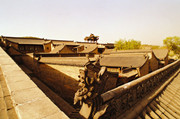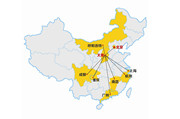Bridge to culture
By Lin Shujuan ( China Daily )
Updated: 2012-08-14

Those seeking to savor Chinese history and culture quickly now have a new traveling recipe, with China listing, for the first time, 10 must-see streets picked through public voting and a panel review by culture experts.
Each of the 10 streets, including Guozijian Street in Beijing, South Avenue in Pingyao of Shanxi province, Central Avenue in Harbin and Barkhor Street in Lhasa, encapsulates a unique facet of China's traditional culture.
Guozijian Street, for example, is the only street in Beijing featuring ancient archways. Home to the Imperial College during the Yuan, Ming and Qing dynasties, it has also witnessed Chinese intellectual development over the past 1,000 years.
South Street in Pingyao city lies at the heart of the exceptionally well-preserved traditional Han Chinese city, founded in the 14th century, and is a window to the city's 700 years of history.
The Central Avenue in Harbin, despite its relatively young history dating back to the late 1900s, stands out from the rest for its eclectic mix of various European architectures that have survived for more than a century.
The 10 streets in the list were chosen from among more than 200 across the country.
The selection, jointly launched by the Chinese Ministry of Culture and the State Administration of Cultural Relics, is aimed at raising public awareness of the importance of preserving and promoting the cultural and historic value of ancient streets, says Ouyang Jian of the Chinese Ministry of Culture.
"Each of them has seen the history and development of the city they were built in," says Ouyang
Other streets included in the list are Pingjiang Road in Suzhou, Jiangsu province; Tunxi Old Street in Huangshan, Anhui province; Three Lanes and Seven Valleys in Fuzhou, Fujian province; Qilou Old Street in Hainan's Haikou and two other streets in Shandong province - Badaguan in Qingdao and Zhaode Street in Qingzhou.




